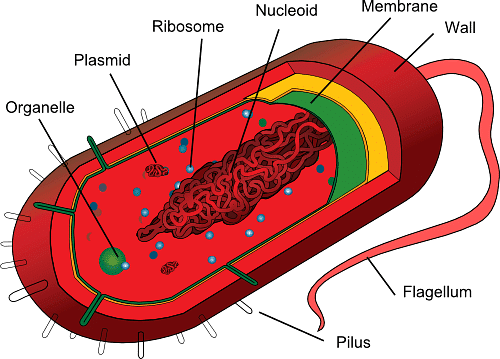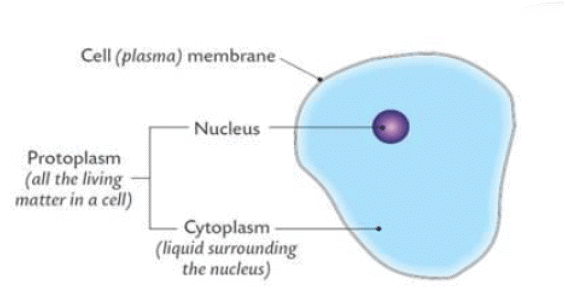Class 9 Exam > Class 9 Tests > Olympiad Test: Cell - The Fundamental Unit of Life- 2 - Class 9 MCQ
Olympiad Test: Cell - The Fundamental Unit of Life- 2 - Class 9 MCQ
Test Description
15 Questions MCQ Test - Olympiad Test: Cell - The Fundamental Unit of Life- 2
Olympiad Test: Cell - The Fundamental Unit of Life- 2 for Class 9 2025 is part of Class 9 preparation. The Olympiad Test: Cell - The Fundamental Unit of Life- 2 questions and answers have been prepared
according to the Class 9 exam syllabus.The Olympiad Test: Cell - The Fundamental Unit of Life- 2 MCQs are made for Class 9 2025 Exam.
Find important definitions, questions, notes, meanings, examples, exercises, MCQs and online tests for Olympiad Test: Cell - The Fundamental Unit of Life- 2 below.
Solutions of Olympiad Test: Cell - The Fundamental Unit of Life- 2 questions in English are available as part of our course for Class 9 & Olympiad Test: Cell - The Fundamental Unit of Life- 2 solutions in
Hindi for Class 9 course.
Download more important topics, notes, lectures and mock test series for Class 9 Exam by signing up for free. Attempt Olympiad Test: Cell - The Fundamental Unit of Life- 2 | 15 questions in 30 minutes | Mock test for Class 9 preparation | Free important questions MCQ to study for Class 9 Exam | Download free PDF with solutions
Detailed Solution for Olympiad Test: Cell - The Fundamental Unit of Life- 2 - Question 1
Detailed Solution for Olympiad Test: Cell - The Fundamental Unit of Life- 2 - Question 2
Olympiad Test: Cell - The Fundamental Unit of Life- 2 - Question 3
The undefined nuclear region of prokaryotes is also known as
Detailed Solution for Olympiad Test: Cell - The Fundamental Unit of Life- 2 - Question 3
Olympiad Test: Cell - The Fundamental Unit of Life- 2 - Question 4
The only cell organelle seen in prokaryotic cell
Detailed Solution for Olympiad Test: Cell - The Fundamental Unit of Life- 2 - Question 4
Olympiad Test: Cell - The Fundamental Unit of Life- 2 - Question 5
Find out the false statement
Detailed Solution for Olympiad Test: Cell - The Fundamental Unit of Life- 2 - Question 5
Olympiad Test: Cell - The Fundamental Unit of Life- 2 - Question 6
Which one of the following is absent in plant cell?
Detailed Solution for Olympiad Test: Cell - The Fundamental Unit of Life- 2 - Question 6
Olympiad Test: Cell - The Fundamental Unit of Life- 2 - Question 7
Which of the following is incorrect pair?
Detailed Solution for Olympiad Test: Cell - The Fundamental Unit of Life- 2 - Question 7
Detailed Solution for Olympiad Test: Cell - The Fundamental Unit of Life- 2 - Question 8
Detailed Solution for Olympiad Test: Cell - The Fundamental Unit of Life- 2 - Question 9
Detailed Solution for Olympiad Test: Cell - The Fundamental Unit of Life- 2 - Question 10
Detailed Solution for Olympiad Test: Cell - The Fundamental Unit of Life- 2 - Question 11
Detailed Solution for Olympiad Test: Cell - The Fundamental Unit of Life- 2 - Question 12
Olympiad Test: Cell - The Fundamental Unit of Life- 2 - Question 13
Cell wall of which one of these is not made up cellulose?
Detailed Solution for Olympiad Test: Cell - The Fundamental Unit of Life- 2 - Question 13
Olympiad Test: Cell - The Fundamental Unit of Life- 2 - Question 14
Organelle without a cell membrane is
Detailed Solution for Olympiad Test: Cell - The Fundamental Unit of Life- 2 - Question 14
Olympiad Test: Cell - The Fundamental Unit of Life- 2 - Question 15
The proteins and lipids, essential for building the cell membrane, are manufactured by
Detailed Solution for Olympiad Test: Cell - The Fundamental Unit of Life- 2 - Question 15
Information about Olympiad Test: Cell - The Fundamental Unit of Life- 2 Page
In this test you can find the Exam questions for Olympiad Test: Cell - The Fundamental Unit of Life- 2 solved & explained in the simplest way possible.
Besides giving Questions and answers for Olympiad Test: Cell - The Fundamental Unit of Life- 2, EduRev gives you an ample number of Online tests for practice
Download as PDF
















